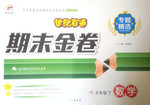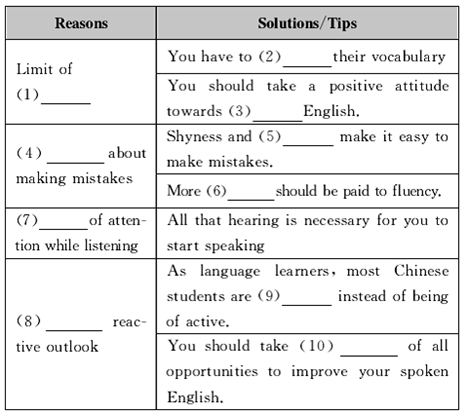题目内容
| 完形填空 | ||||
| People on a college campus were more likely to give money to the March of Dimes if they were asked for a donation by a disabled woman in a wheelchair than if asked by a nondisabled woman. In another 1 , subway riders in New York saw a man carrying a stick stumble(绊脚) and fall to the floor. Sometimes the victim had a large red birthmark on his 2 ; sometimes he did not. In this situation, the victim was more likely to 3 aid if his face was spotless than if he had an unattractive birthmark. In 4 these and other research findings, two themes are 5 : we are more willing to help people we like for some reason and people we think 6 assistance. In some situations, those who are physically attractive are more likely to receive aid. 7 , in a field study researchers placed a completed application to graduate school in a telephone box at the airport. The application was ready to be 8 , but had apparently been "lost". The photo attached to the application was sometimes that of a very 9 person and sometimes that of a less attractive person. The measure of helping was whether the individual who found the envelope actually mailed it or not. Results showed that people were more likely to 10 the application if the person in the photo was physically attractive. The degree of 11 between the potential helper and the person in need is also important. For example, people are more likely to help a stranger who is from the same country rather than a foreigner. In one study, shoppers on a busy street in Scotland were more likely to help a person wearing a(n) 12 T-shirt than a person wearing a T-shirt printed with offensive words. Whether a person receives help depends in part on the "worth" of the case. For example, shoppers in a supermarket were more likely to give someone. 13 to buy milk rather than to buy cookies, probably because milk is thought more essential for 14 than cookies. Passengers on a New York subway were more likely to help a man who fell to the ground if he appeared to be 15 rather than drunk. | ||||
|
1-5: ACDCA 6-10: BDBBA 11-15: ABCDD

练习册系列答案
 世纪百通期末金卷系列答案
世纪百通期末金卷系列答案
相关题目
| 完形填空 | ||||
| How would you like to study at an American university in China? 1 the news that New York University (NYU) is opening a campus on Chinese mainland, the possibility of getting an American education is coming closer to a 2 . But how will Chinese students deal with a very different style of teaching? 3 that encourages debate, discussion and critical thinking? You know how kids constantly ask questions? They have so much to learn and simply 4 information. Asking questions _5_ they are curious. So 6 does that natural 7 become weaker? Not at kindergarten, nor at primary school. But perhaps with puberty(青春期) 8 self-consciousness and a reluctance to draw attention to yourself by asking the teacher questions. 9 , that's a pity, because asking your teachers questions should be encouraged. After all, they've been educated, 10 a lot more experience than you and perhaps possess a little wisdom. When I taught journalism at college in Scotland I 11 answering students' questions. Some of them asked difficult ones. I didn't always know the answers. If I didn't, I'd admit 12 and try to find out later. At university we were encouraged to challenge our peers and tutors. A student would prepare a paper on a subject and other students would 13 it. It was a way of 14 critical and logical thinking. You can learn to think logically, 15 some of the more difficult problems would probably require advanced math. Having a logical mind can help develop critical thinking. My wife doesn't have a logical mind, but she does have emotional intelligence. An ability to empathize(有同感) with people, relate to them and 16 their personalities is also important to critical thinking. I can't claim to have 17 like her emotional intelligence, but I'd like to think some of it has influenced me. If you can't 18 try to put yourself in someone else's 19 , how can you understand their situation and their problems? So try to develop your powers of critical thinking. 20 books, films, music and newspapers. And don't believe everything you read or see. Think for yourself. | ||||
|

 tever work suited to his brains and ability
tever work suited to his brains and ability